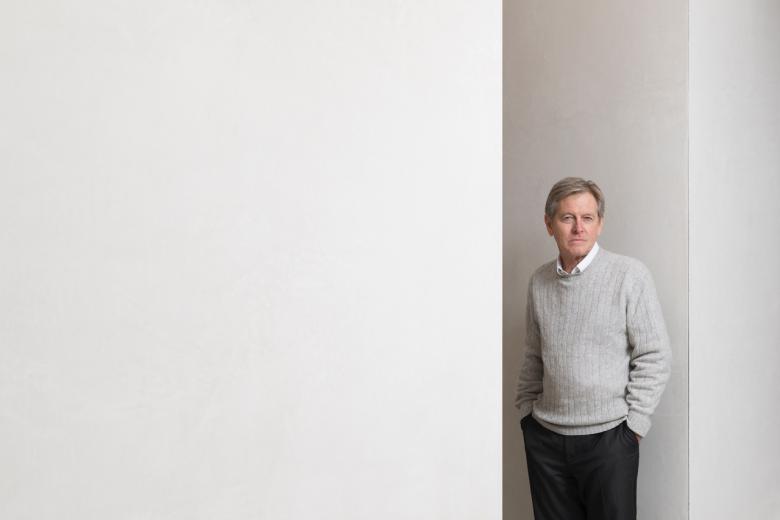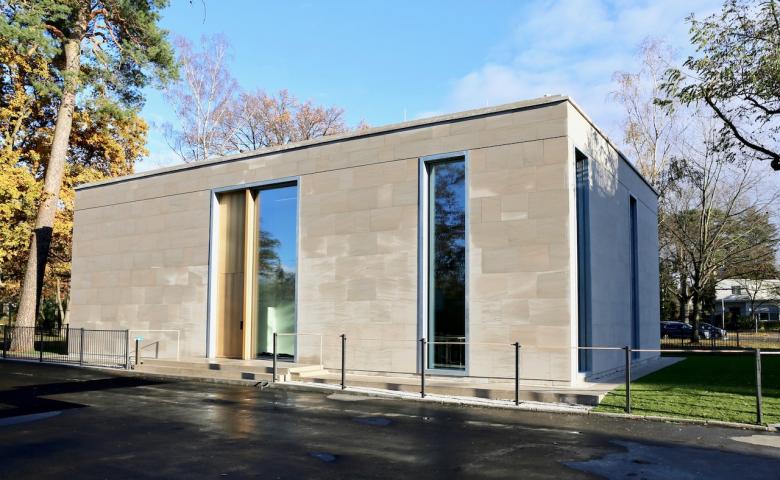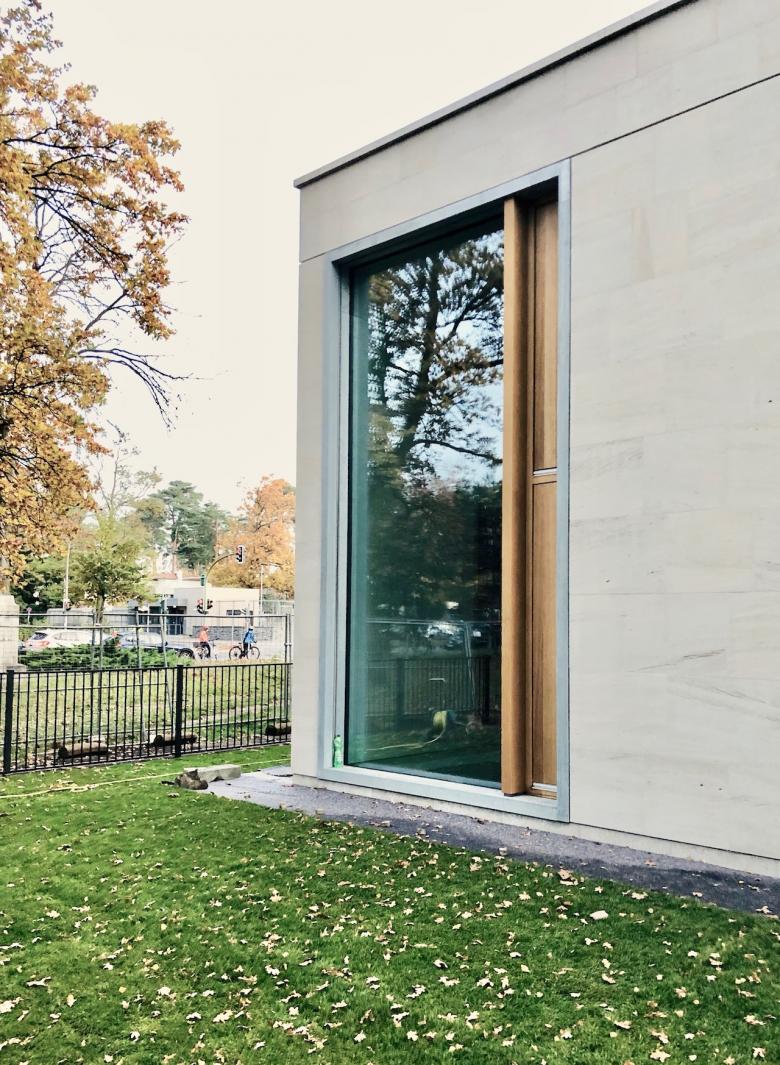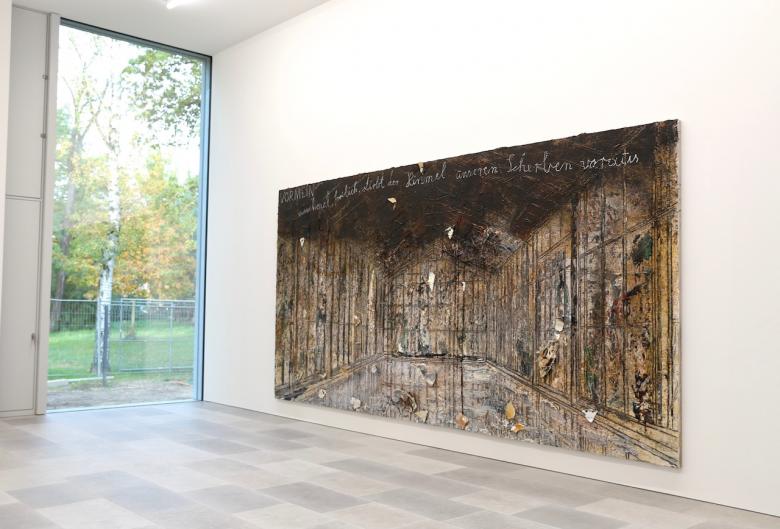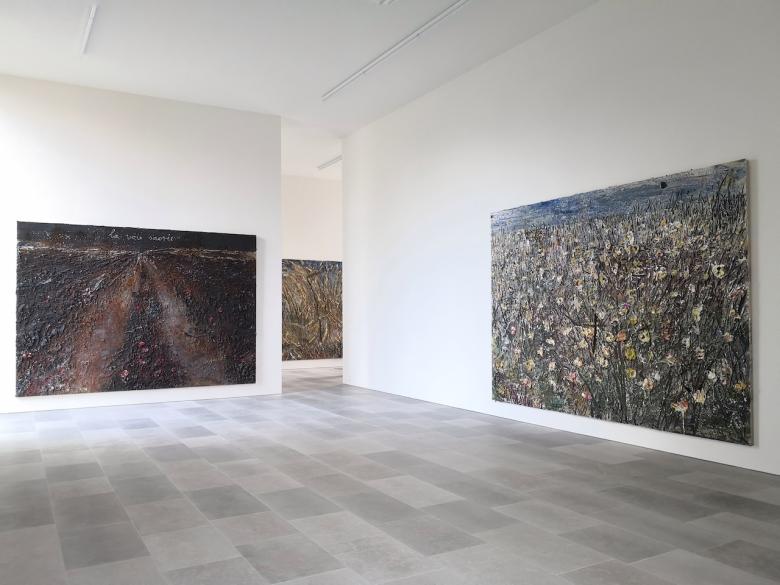Upon the opening of the new Bastian Gallery in Berlin’s Dahlem district on November 13, Ulf Meyer spoke with its architect, John Pawson — the king of British minimalism and a prolific Instagrammer — who revealed some insights behind his architectural designs in and beyond the German capital.
Ulf Meyer: When I visited your recently inaugurated Bastian Gallery in Berlin, Ludwig Mies van der Rohe’s phrase fast nichts (“almost nothing”) came to mind. Was it Deyan Sudjic who coined the term “plain space” to describe your work?
John Pawson: Well, it is not easy to put everything in just one term or two, but I am happy with the expression “plain space.” The term “minimal” is open for misinterpretation. The word was used for an art movement in the 1960s. But none of the artists of Minimal Art were too happy with that label.
Are you referring to Donald Judd?
Yes, and all the others, too; they came up with an alternative phrase. But is has not bothered me. When you argue too much, it sounds defensive. It’s a complex thing to design a minimal space. It’s a lot of work and needs a lot of care. You can’t reduce something too much. You try to work out the perfect balance between adding and subtracting so it achieves a certain quality.
The control of the details and crafts seems to be key. How do you do that in remote projects on the continent? There is a language barrier and geographical distance. Yet you seem to manage! Is it the drawing or verbal communication?
All of the above. We go there often; for European projects we go there once a month, in Japan and the US less frequently. We rely on good people on the ground, the local architect. That relationship is quite important. We interview people, because in the end we are responsible. There is no substitute for being there. In my head you are always thinking three-dimensionally anyway.
Carlo Scarpa saw a drawing as a starting point for discussion, but you want to lay out things beforehand. You don’t see a drawing as a basis for further discussion on site? Things are set before the craftsman enters the scene?
I learned the hard way. If you try and make changes on site, you get into trouble.
Now you have designed two private art spaces in Berlin: first the Feuerle Collection in an old bunker and now a free-standing art pavilion for the Bastian family. Demand from Germany seems to be particularly strong.
Most of my work has always been outside the United Kingdom. I always knew that Germany was a receptive audience and visually articulate nation, together with Scandinavia, the Netherlands, and a few other countries mostly in the North. In England, literature is so strong, but architecture not necessarily. We have been forced to become more visual in the last forty years since I started my practice.
Germany traditionally identifies more with music, philosophy and literature rather than with architecture. In Switzerland or the Netherlands even politicians will promote architecture and architects.
Well, the grass is always greener on the other side. Anyway, we have always had a very good experience with Germany. Starting with my first architectural commission for the Neuendorf Villa on Mallorca, interest in my work from German clients was strong. That was our first house.
Did that project help you in the transformation from being a designer and interior designer to being an architect and a designer simultaneously?
Yes, but then again, everything I do is architecture. I think of design as architecture as well. The scale does not matter. It was the first stand-alone building.
Your work is quite versatile and broad in scope, not only in terms of geography, but also in terms of typology. You can design a bridge one day, like the Sackler crossing, then a hotel lobby in Madrid and a Japanese store the next day. Is versatility a value in itself for you? Do you actively seek this broad range or does it just happen? You must be busy rejecting lots of commission, too.
That is a misconception. Clients usually are already committed because they like our work before they pick up the phone. Never say “no” to a good project. But sometimes chemistry is not right or there is a misconception about costs. Many young people do not anticipate how costly it is to build a house these days. But I like to do modest things or lower cost housing and pro-bono works as well.
With minimalist architecture, the attention to detail and the control of the quality of the craftsmen’s work is essential. Do you work with a set of partners? That seems impossible if you work on different continents; you cannot fly in your preferred craftsmen.
Sometimes we do some of that. For the Jaffa Hotel in Tel Aviv we imported some craftsmen. There, I could relax because B&B Italia did a great job there.
But there is a premium to that, and the Covid epidemic has made everything harder and more costly. We have a project in Manila, in the Philippines, where we do that as well. But while we cannot have a constant set of handymen for all the projects, we do have a constant team of architects in my office. Everybody has been here almost from the start. We have four or five from Germany, a few Portuguese and two Yorkshire men.
My spies found out that the residence you designed for David Zekedi in the city of Giessen, near Frankfurt, was inaugurated yesterday. I hope that neither you nor the client will be too secretive about this project.
Just like the Bastian Gallery I have not seen the project completed just yet, but that will soon change. Private residences are not always easy to visit.
You probably have very strict eyes, but I think the built quality of the Bastian Gallery in Berlin would come as a pleasant surprise to you, once you see it in reality.
I think so, too. Architecture needs to be explored in reality and in three dimensions. Site visits are also very essential to me before I start designing.
You have designed a chapel and a monastery and many art spaces. Do you think that the realms are starting to merge? Is there something religious about minimalism?
Yes, but you have to be careful. Churches are not shops and houses are not sacred. We are architects and we are pragmatic people. We design a container or a place which fits the purpose. When you design a church, you want it to have a spiritual atmosphere. But you do that with the same tools like any other type of building. The ingredients are the same: light and proportion. A Jil Sander store is not a sacred space. There is only one spiritual place and that is in a church or temple. People sometimes say that a living room I designed can feel almost like a “sacred space,” but they are just designed for people to feel good.
I like your answer.
My grandparents were Methodist, Wesleyan Christians. They took that seriously, but already my parents were less religious even though they were strongly influenced by their parents’ religious upbringing.
When I designed the monastery in the Czech Republic, I asked to join a communion, but the monks rejected that because I am not Catholic even though my wife is quite a strong Catholic. They did not want the space to be “Christian” or “Jewish” or “Muslim.” They just wanted somebody who understood that they needed a certain atmosphere for a space that allowed them practice and be close to their God. But they looked at my house and even a Calvin Klein Store design and took that as suitable references for my design approach for redesigning the monastery.
I have designed five holy spaces so far: the St. Moritz Church in Augsburg, Germany; the Novy Dvur monastery in Bohemia; the Abbaye Notre-Dame de Sept-Fons in Burgundy, France; the Wooden Chapel in Unterliezheim, Germany; and the St. John at Hackney Church in Eastern London. But when I design a holy space, I do so as an architect with pragmatic considerations in mind. Of course, you want the space to be able to accommodate something spiritual.
I just listen to my clients. When I was younger, I was busy talking to my client, but now I just shut up.
You used to work with or for Shiro Kuramata in Japan, and even though this was long time ago, I think your time in Japan were formative years in your life. I also used to work in Japan, but for Shigeru Ban, and I thought Japan was very inspiring. In the Japanese language the word kire-i means beautiful and clean. So, to the Japanese mind these two adjectives are one and the same: things cannot be beautiful unless they are clean. That is a fascinating observation for me and I would like to disagree — I think grunginess can also be beautiful, maybe even dirt.
Well, maybe mud that you use as a skin-care material can be “beautiful,” but otherwise I think there is a connection behind kire-i. This word is used a lot in Japan and in Japanese.
In Japan people are obsessed with cleanliness. it sometimes feels as if the act of cleaning is an act of worship.
In a church or mosque, too, you clean yourself with water before entering, at least symbolically.
In February, an exhibition with your photographic work will be inaugurated in Berlin. Is architecture the main subject of your photography? You still engage professional photographers to shoot your buildings, correct, but you also photograph them yourself?
Yes, but without an assignment. I can relax when I take photographs. When I still lived in Japan, I was once asked by a magazine to do sports photography at a grand prix car race, but I came home with detail pictures of the wheel and no shot of the winner at the finishing line.
You were a trouble maker back then. In Japan you do what you are told to do.
They did not commission me again, but they also did not ask for their money back.
We are so spoiled today with masses of great photos all around us online, available conveniently at our finger tips. Like never before.
That situation is difficult for professional photographers. Instagram is so tempting: You can count the amount of “likes.” When I take a picture of a shadow I get less “likes” compared to a brighter shot of an interior.
Now I’m looking forward to your exhibition even more. Thank you very much for the interview.
